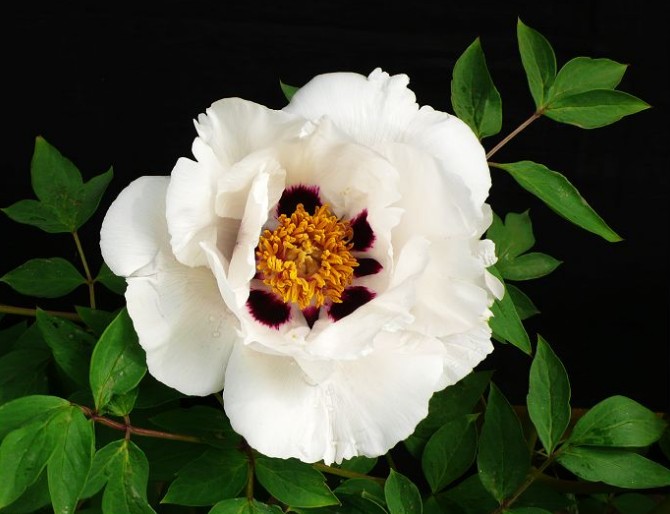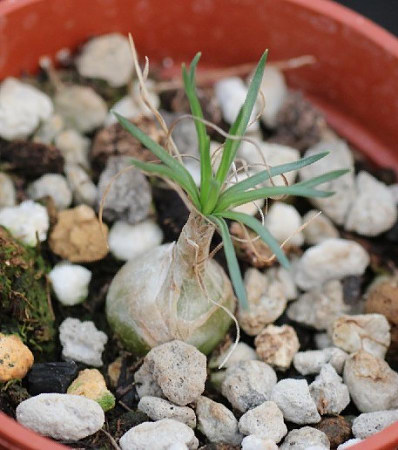Fertilization methods of potted camellias
Fertilization of camellias should be carried out selectively according to different growth stages of camellias. Topdressing is needed during the growing period of camellia, and quick-acting liquid fertilizer and chemical fertilizer should be applied. In the stage of branches and leaves, nitrogen fertilizer or nitrogen-based mixed fertilizer should be applied. Phosphate fertilizer or phosphorus-based mixed fertilizer is needed before flower bud differentiation, bud formation, growth and flowering. The mixed fertilizer based on phosphorus and potassium is the most suitable for autumn and winter.
(1) nitrogen fertilizer promotes spring shoot.
Camellia begins to grow in the shade at about 18 degrees Celsius. At this time, bud-destroying fertilizer based on nitrogen fertilizer should be applied once every 10 days until the spring shoots begin to deteriorate. If there are conditions, it can also be foliar sprayed with 1000 times of potassium hydrogen phosphate, 1% urea and 300 times rice vinegar. After spraying wine on the roots and leaves for many times, the spring shoots will grow luxuriantly, the leaves can extend to the maximum, and the shoots can accumulate rich nutrients, creating good conditions for flower bud differentiation.
(2) increase the application of phosphorus and potassium fertilizer to promote the differentiation of flower buds and form flower buds.
After the spring shoot of camellia is full, there will be a short period of semi-dormancy. At this time, the camellia changed from vegetative growth to reproductive growth, and the flower buds began to differentiate. If you want to make camellias produce more buds, you should apply more phosphorus and potassium fertilizer, and no or less nitrogen fertilizer. If the small camellias grow mainly, it is still dominated by nitrogen fertilizer, and no or less phosphorus fertilizer is applied. Foliar spraying with a mixture of 1000 times potassium hydrogen phosphate, a small amount of borax and rice vinegar every 10 days can not only control the branch growth of camellias, but also promote and shorten the time of flower bud differentiation and facilitate the formation of flower buds.

Camellias usually begin to bloom in the shade at about 18 ℃. At this time, bud-destroying fertilizer based on nitrogen fertilizer should be applied once every 10 days until the spring shoot begins to Lignification. If possible, foliar spraying can also be carried out with a mixture of 1000 times of potassium dihydrogen phosphate, 1% urea and 300 times rice vinegar. After many times of root and foliar spraying, the spring shoot will grow very luxuriantly, the leaf can extend to the maximum, and the shoot can accumulate rich nutrients, creating good conditions for flower bud differentiation. (2) increasing the application of phosphorus and potassium fertilizer can promote the differentiation of flower buds and form the spring shoot of camellia. After Lignification, there will be a short period of semi-dormancy. At this time, the camellia changed from vegetative growth to reproductive growth, and the flower buds began to differentiate. If you want to make camellias produce more buds, you should apply more phosphorus and potassium fertilizer, and no or less nitrogen fertilizer. If the small camellias grow mainly, it is still dominated by nitrogen fertilizer, and no or less phosphorus fertilizer is applied. Foliar spraying with 1000 times potassium dihydrogen phosphate, a small amount of borax and rice vinegar can not only control the excessive growth of camellia branches, but also promote and shorten the time of flower bud differentiation, which is beneficial to the formation of flower buds. (3) it is not suitable to apply fertilizer in midsummer, let alone thick fertilizer, the weather is hot in midsummer, the growth of camellias is slow or half-paused. It is not suitable to apply fertilizer at this time, and special attention should be paid to not applying thick fertilizer. If the soil is barren, thin liquid fertilizer can be applied in combination with watering to improve the soil quality. (4) the mixed fertilizer based on phosphorus and potassium fertilizer was properly applied in autumn, which belongs to the period of nutrient accumulation of camellia plants. In order to survive the winter safely, the mixed fertilizer based on phosphorus and potassium fertilizer can be applied every half a month, combined with foliar spraying to promote plant health and improve the cold resistance of camellias. (5) dilute phosphorus and potassium liquid fertilizer should be applied in winter. Camellias in cold winter enter semi-dormancy period. Camellias enter the cellar, vegetative growth has entered dormancy, do not need much fertilizer. However, its reproductive growth has not completely stopped, and it is in the season of flowering or preparing for flowering, so it should be combined with watering and applying thin liquid phosphorus and potassium fertilizer. Do not apply thick fertilizer.
- Prev

Culture methods and matters needing attention of Paeonia suffruticosa
Paeonia suffruticosa is an endemic plant in China. It is a precious flower germplasm resource and its root bark is used for medicine. Paeonia suffruticosa is a cold and dry ecotype with strong stress resistance and is suitable for low temperature and arid climate. Purple spot peony is scattered in Shaanxi, Gansu and western Henan. Due to the use of root bark as medicine, it has been overmined for a long time.
- Next

Bulb flowers need to grow balls first when they return to flowers.
The flower bud formation of bulbous flowers is mostly stimulated by temperature difference. Most parts of our country have four distinct seasons of climate, without any stimulation, bulb flowers can be reflowered, that is to say, as long as a good ball, reflowering is sooner or later, a variety of bulbous flowers can be reflowered. So it comes down to-the point is to raise the ball well.
Related
- Fuxing push coffee new agricultural production and marketing class: lack of small-scale processing plants
- Jujube rice field leisure farm deep ploughing Yilan for five years to create a space for organic food and play
- Nongyu Farm-A trial of organic papaya for brave women with advanced technology
- Four points for attention in the prevention and control of diseases and insect pests of edible fungi
- How to add nutrient solution to Edible Fungi
- Is there any good way to control edible fungus mites?
- Open Inoculation Technology of Edible Fungi
- Is there any clever way to use fertilizer for edible fungus in winter?
- What agents are used to kill the pathogens of edible fungi in the mushroom shed?
- Rapid drying of Edible Fungi

